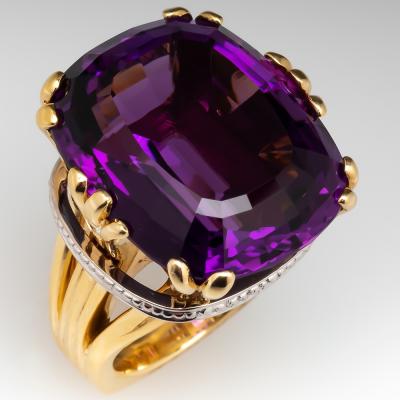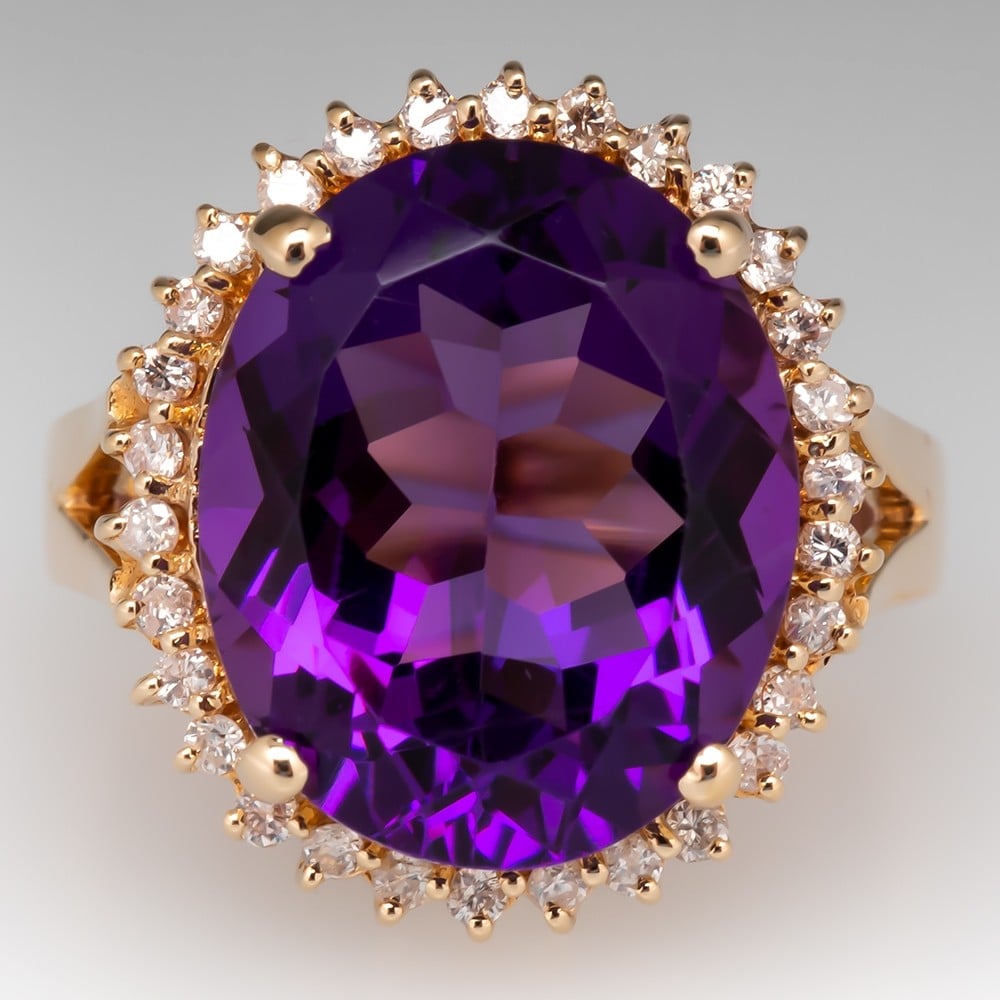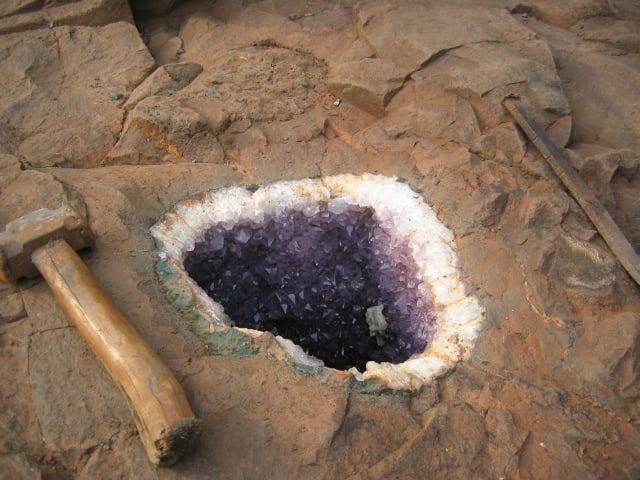
Posted in: Birthstones
 Amethyst, classified mineralogically as purple quartz, occurs in hydrothermal veins and hot springs. It also develops in igneous rocks and in metamorphic rocks. As such, it sometimes appears in sedimentary deposits.
Amethyst, classified mineralogically as purple quartz, occurs in hydrothermal veins and hot springs. It also develops in igneous rocks and in metamorphic rocks. As such, it sometimes appears in sedimentary deposits.
Different Ways Amethyst Forms
Most amethyst forms in clusters of protruding pyramidal crystals atop a basic matrix. (source) Frequently, spikes of amethyst crystals split off at their base, creating a Siamese twin appearance. In hydrothermal veins, amethyst often occurs in several growth phases, resulting in a banded, almost agate-like appearance. (source) Amethyst also lines the inside of cavities and fissures in volcanic rocks, resulting in geodes and druzy crystal slabs. This druzy amethyst forms in short, stubby prismatic crystals often without distinguishable prism faces. (source) Also deep within the earth, similar crystalline layers form within volcanic pipes, with striated bands and sometimes large scepter-like growths. (source) Amethyst scepters also form in medium-temperature alpine fissures and pegmatites. (source) These typically form on top of other crystals, such as rock crystal or smoky quartz. (source)
The Formation Process
In order for amethyst to form, several basic elements are required. First of all, a silica-rich chemical brew with a pinch of ferric iron. Also, a suitable surface for crystal growth. Finally, to transform iron-infused quartz into brilliant royal purple, a bit of radiation is required. (source) The hydrothermal chemical bath that results in amethyst begins deep within the earth. As the great pressures of the earth drive these chemical solutions toward the surface, they flow freely into open cavities and fissures. As soon as they reach the surface, oxygen jumps into the mix, transforming the brew into silicon dioxide, the basic foundation of quartz. This concoction, then, begins to settle into cracks, crevices, fissures, and gas bubbles within the surrounding rocks. Sometimes the brew flows in all at once. At other times, the solution seeps in through tiny cracks drip by drip, slowly adding layer upon layer of banded crystal growth. As it cools, and if it is exposed to the right amount of radiation, the resulting crystals appear purple to the visible eye. According to Scientific American, the presence of radioactive isotopes like thorium 232, potassium 40, uranium 238, and radium 226, explains the abundance of amethyst found in igneous rocks rich in these isotopes. (source) When this brew floods a cavity, it hardens over time into the druse closely associated with geodes.
About Amethyst Geodes
From the outside, a geode looks like a typical boring old rock. However, once broken open it reveals a hidden cave of treasure. According to Geology.com, geologists propose a number of working theories for geode formation.Igneous Geodes
The first theory involves gas, a prime component of the hot magma which eventually cools into igneous rocks. As the magma explodes upward, gas bubbles form as the magma transforms into flowing lava. Sometimes, these gases remain trapped as the lava cools, resulting in cavities and fissures. (source) As lava cools, the mineral-rich fluids then flood in, pouring into every opening, crack, and fissure, leaving behind the perfect crystal growth medium. Over time, amethyst grows into druzy blankets covering every surface within the cavity.Sedimentary Geodes
For those geodes found in sedimentary rocks, geologists propose that in addition to gas bubbles, pockets form when organic materials decay after the surrounding rocks harden. For example, the sedimentary rock might form and harden around a shell, a tree branch, or a root. Once the carbonaceous material rots away, the cavity can then be filled by the silica-rich fluids that give birth to crystals. (source) There is nothing quite as exciting as looking within an ordinary rock to find a tiny cave made of purple crystals. Amethyst geodes are among my favorite rocks of all time. What is your favorite rock? ~Angela Magnotti Andrews4 years ago
89 view(s) 